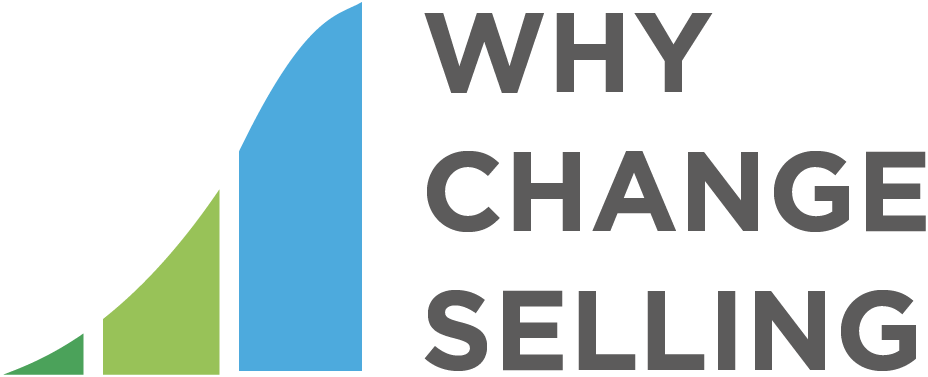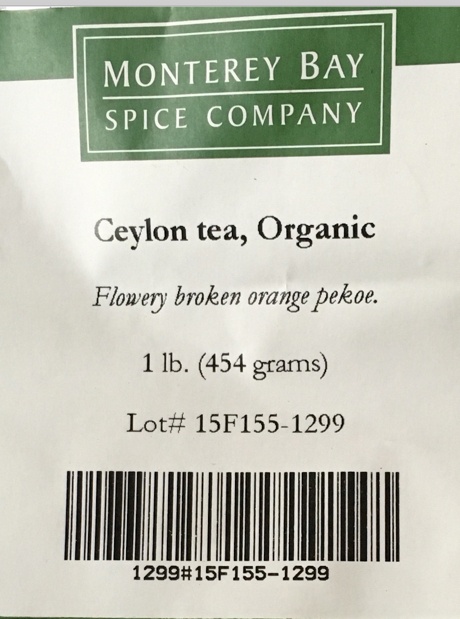The CSO insights 2015 Sales Performance Optimization survey of more than 1000 Chief Sales Officers in companies Worldwide was published last month and the findings are alarming.
Salespeople are struggling to hit their numbers and marketing is not contributing enough value!
This article contains links to resources to answer some of the "How can I improve sales performance?" questions
Article Length: 1960 words
Reading Time: 10 Minutes
The performance trends identified in the survey are disturbing and could make many sales and marketing leaders uncomfortable.
Sales productivity is down and sales quota achievement is down with only 58.1% of salespeople making quota.
Last year 81.8% of companies attained their revenue plan - the worst result in the past 5 years.

Despite a booming economy in the US and recovering economies in Europe, sales effectiveness is declining.
I asked Barry Trailer from CSO Insights, co-author of the 2015 SPO, what he thought is causing the current decline, “We believe there are 2 significant issues contributing to the decline seen over the past year.
First, you mention the strengthening economic climate; an old line is that "rising revenues hide all sins." The discipline, focus, intensity and measuring of process that were put in place during the Great Recession have relaxed in many instances.
Second, nearly half of leads are self-generated by reps, which is a huge time sink; Sales & Marketing alignment needs to become real. Creating SLAs--in both directions--from Marketing to Sales and Sales to Marketing, would go a long way toward accountability and improved performance."
- Why is this happening?
- What can sales leaders do about it, that they are not already doing?
Before answering these questions, let’s take a look at what sales leaders consider their biggest barriers and what they are planning to do to achieve success in 2015.
Ineffective Marketing is Causal in the Top 2 Sales Effectiveness Barriers
When asked, sales leaders indicate that their top two barriers to success are a lack of qualified leads and difficulty in differentiating from competitors.

These sales effectiveness barriers are both caused by ineffective marketing execution.
- With only 1 in 4 leads generated by marketing, salespeople are again left to do much of their own lead generation.
- Competitive differentiation in a World of “me-too” products requires more than a slide deck with a bunch of check marks against your product capabilities and blanks vs. competition.
2 of Top 3 Sales Management Objectives Depend on Marketing
This chart is interesting as it indicates that two of sales top three objectives are heavily dependent on marketing execution.

The really bad news is that 95% of firms surveyed are planning to raise quotas in 2015.
With sales dependent on effective marketing to achieve bigger quotas in 2015, only one in four firms surveyed is planning to increase their marketing budget in 2015 by more than 10%.
- Where are the leads going to come from?
- How will salespeople differentiate?
- How can companies improve sales effectiveness?
Crunch Time for Sales Leaders
In 2015, quotas are up, marketing budgets are nearly flat, competition is tougher and digitally empowered buyers are in control of their buying process.
To give you some perspective of what bad looks like, here’s what the bottom 30% of surveyed companies achieved in 2014
- 42.7% of Reps Met/Exceeded Quota and Achieved 49.9% of Company Plan
- 37.3% of firms are at Level 3 – Formal Sales Process or Level 4 – Dynamic Sales Process
- 37.6% of firms have a sales process adoption rate >75%
- 31.1% of firms are at Level 4 – Strategic Contributor or Level 5 – Trusted Partner (Relationships)
- The average spend on training per sales rep/per year was $1,947
- 79.1% of firms have implemented a core CRM system
- Of firms that have a core CRM system, 23% have an adoption Rate >90%
- 42.1% of firms provide their sales teams with access to sales intelligence solutions
Doing more of the same in 2015 is not going to cut it.
Tools and technology can help, but alone they are a small part of the equation
This idiom is now well worn, but highly relevant in 2015; How you sell, is more important than what you sell.
Optimization, process and behavior changes are required in order to achieve success. Sales leaders must make changes now if they hope to achieve their numbers in 2015.
Salespeople Must Become More Effective – what it takes to be great!
What does great look like?
The top 10% of companies are more disciplined in execution and create more value for their customers. They invest more in their salespeople in training and tools. As a result, their salespeople win more often, lose less often, are more loyal to the company and actually use the processes and support systems provided.
CSO Insights data reveals what the top 10% of companies are doing differently from the rest.
o 75.1% of Reps Met/Exceeded Quota and Achieved 116.7% of Company Plan
o 47.5% of firms are at Level 3 – Formal Sales Process or Level 4 – Dynamic Sales Process
o 50.9% of firms have a sales process adoption rate >75%
o 46.9% of firms are at Level 4 – Strategic Contributor or Level 5 – Trusted Partner (Relationships)
o The average spend on training per rep/per year was $2,512
o 84.9% of firms have implemented a core CRM system
o Of firms that have a core CRM system, 50.9% have an adoption rate >90%
o 60.7% of firms provide their sales teams with access to sales intelligence solutions
An Action Plan for 2015
There are many levers that sales managers can pull to get results, however most sales leaders agree that if salespeople have more and better quality leads and they are more effective in qualifying those leads, they will sell more.
1. Salespeople need more and better quality leads.
- This is a marketing problem! It’s time to sit down with marketing and make crystal clear what you want and need in terms of leads, lead hand-off and workflow.
- If marketing generates more and better quality leads, salespeople will sell more as more of their time will be allocated to actual selling time instead of trying to find prospects.
- Sales and marketing alignment will drive cleaner lead hand-off and if extended through messaging alignment, will create a clearer value messae for Website and conversational content.
- Specializing roles in sales and separating sales development from salespeople and account managers has proven to be an effective strategy to improve lead quality. Sales reps only work on leads that have been qualified by a sales development rep. Get the Predictable Revenue eBook part 1. free download by Aaron Ross on role specialization.
2. Salespeople need better conversational content to engage and qualify prospects
- Again it's time to sit down with marketing and define the content and the content formats your team needs to engage and sell. This includes a Point of View conversation, stories, buyer problem-cause analysis and capabilities, inventories of emails, visual stories, video, questions to ask, FAQ’s etc.
- Content is your first and most important product, but an often-overlooked part of the salesperson’s toolkit. Ask a sales manager what they think content is and half of them will tell you – collateral.
It used to be 10-15 years ago, but digital buyers engage on multiple channels simultaneously and content needs to work in any channel. - Content embodies your brand values and it’s what buyers engage with on your Website and it’s hopefully driving the same conversation and written communication salespeople are having with prospects.
- A 100-person sales team will generate a minimum of 320,000 brand messages per year, if each sales rep just has 4 conversations with prospects, sends 8 emails, (either solicitations or follow-ups), holds one presentation and has 3 other conversations per day. How clear is your message?
- Unless granular content is provided in a way that is easy to consume, re-use, combine and personalize, salespeople will be forced to make it up or rehash the old stuff that’s been around for years.
- If your marketing team is unresponsive to your request or unable to deliver, then it’s time to establish your own Sales Enablement team to complete this and other vital sales infrastructure tasks.
- Find out how well your content addresses the needs of your team with a content health-check
3. Sales leaders need to implement sales process and drive adoption
- A sales process that is not written down and aligned to the customers buying process and risk profile is of no value.
- If you don’t fully understand how customers buy, you might consider using the IMPACT model as it accurately reflects what is going on in the buying organization.

- When you truly understand how your customers buy, it makes sense to map your selling process onto the transitions in the buying process.
- Get the IMPACT EBook - An Executives Guide to Selling Disruptive Technology.
4. Salespeople need better tools to help them to become more productive
- CRM adoption was way down in 2014. What value is a CRM tool if salespeople hate it and don’t, or wont use it?
- CRM is rapidly evolving, as sales tools become fun to use and create value for salespeople by saving them time.
- Instead of salespeople having to do all the work inputting data, the new wave of CRM systems do the work for salespeople by pre-populating fields, integrating sales intelligence and prospect behavior. They will even dial and answer the phone and record your conversations. Creating templates and sending personalized email could not be easier.
- Three CRM tools I have seen recently that are impressive and truly do help salespeople get more done are HubSpot’s new CRM product, Nimble and Close.io. (Disclaimer, I am a HubSpot CRM user and HubSpot reseller).
- Knowledge Management and content delivery platforms promise to capture and widely share knowledge and clone best practices of top sellers and to give subject matter experts more leverage.
These systems are now fun to use, provide real value when set up correctly, are inexpensive and are scalable enough to roll-out to channel partners.
5. Sales managers are key to improved hiring and sales rep development
- Sales managers are responsible for successful hiring and rep development. These might be seen as talent acquisition roles or training and development responsibilities, but great sales managers are always looking for and developing talent.
- CSO Insights report suggests that the best sales managers are networking with potential candidates and allocating time for coaching and development of the core group in their sales teams.
- Participate in the 2015 CSO Insights Sales Management Optimization Survey and get the CSO Insights 2015 Sales Performance Optimization Key Trends topical report
Summary – New Realities
2015 promises to be a transitional year for many sales organizations as they come to grips with the new realities in engaging the digital customer.
Changes are required in sales and marketing mindset as a first step to changing the attitudes and processes.
- Empowered buyers are evolving vendor engagement and purchasing practices faster than most vendors adapt their selling process.
- Content is a strategic imperative for sales engagement and sales effectiveness and must address new digital sales & marketing requirements.
- New sales operations and sales enablement models are a priority requirement to bridge the sales and marketing divide.
- Sales and marketing alignment continues to provide high ROI, vs. other sales effectiveness measures.
- CRM tools should be fun to use, deliver real value and help salespeople become more productive, maybe it's time to change yours if it's not delivering value.
- Don’t forget people development – coaching sales managers to be better coaches, skills training and rep development.
Salespeople want to succeed. If you give them what they want and need to become more effective, they will deliver the goods.
Companies that embrace change, better process and disciplines and build a culture that truly creates value for their customers based on how they sell, will grow and thrive. Those that do not, will quickly become marginalized by their more effective competitors.




